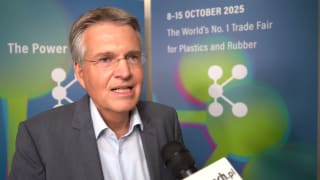 We present an interview with Matthias Zachert, CEO Lanxess AG.
We present an interview with Matthias Zachert, CEO Lanxess AG.What is the cause of the group's financial difficulties in recent months? What step have the company's new management taken to improve the situation?
Let me start off by saying a few words about Lanxess's success story. The first 10 years were exactly that: the spin-off in 2004 followed by the stock exchange launch in January 2005 and culminating in the admission into the biggest German Stock index (DAX) in 2012. We have established our position in the industry and are now well positioned globally. Today, Lanxess is a company of international renown with employees that stand up for the company.
However, we haven't done enough in the past 10 years to adapt our business model. In this time, our markets and competitors have changed substantially. We now need to respond to this. Under the motto of “Let's Lanxess again” we have therefore established a program to realign ourselves and improve the long-term competitiveness of the company.
Our biggest building site is our rubber business, that much I can say. Here we face overcapacities, new competitors and varying energy frameworks. At the same time, we need to lower our debt and reduce costs.
Are the objectives of the Advance program announced last fall still valid? Has the program been launched yet? Particularly with respect to reducing staff numbers and selling the company's subsidiaries?
The personnel adjustments made under the Advance program have been completed. As part of the program's portfolio measures we sold Perlon Monofil GmbH to the Serafin group in March of this year. We are currently reviewing further strategic options.
It is already clear, however, that the steps we have introduced under Advance will not suffice to adequately arm our company for the difficult times to come. Through our "Let's Lanxess again" drive we want to identify where changes have to be made to safeguard the long-term competitiveness of our company and to implement them in good time.
How long is it going to take the company to become profitable again? When do you think the company will start making profits?
As I said, the past 10 years have been very successful for us. Now, however, the changed market conditions mean that Lanxess is about to undergo a comprehensive realignment. This process is expected to take two to three years.
Which of the group's operating segments do you think will be exposed to the biggest problems in the months to come? Which operating segments is Lanxess going to develop and which is it going to abandon?
Our rubber division is clearly facing the biggest challenges, at the same time however, also the biggest opportunities. So whilst we are confronted with overcapacities here in the next two to three years the underlying mobility trend is very robust. In order to restore profitability we will address our cost structure. The focus on future investments will however largely be in our other two segments, as we have invested substantially in the rubber division in the recent years.



